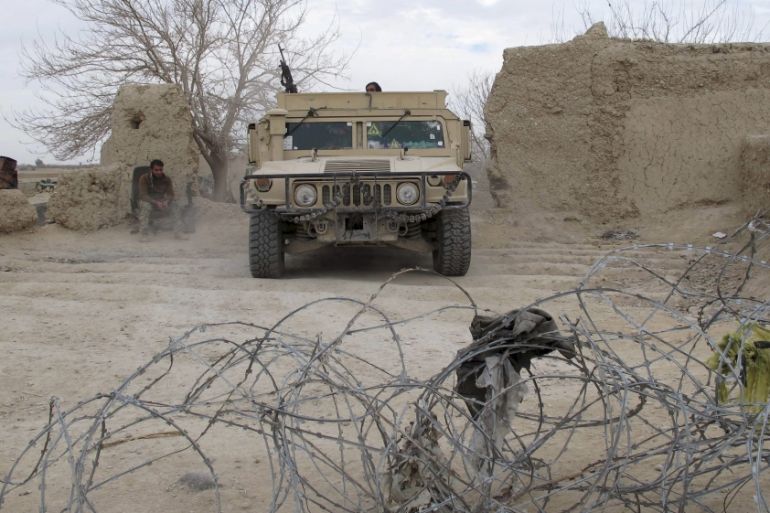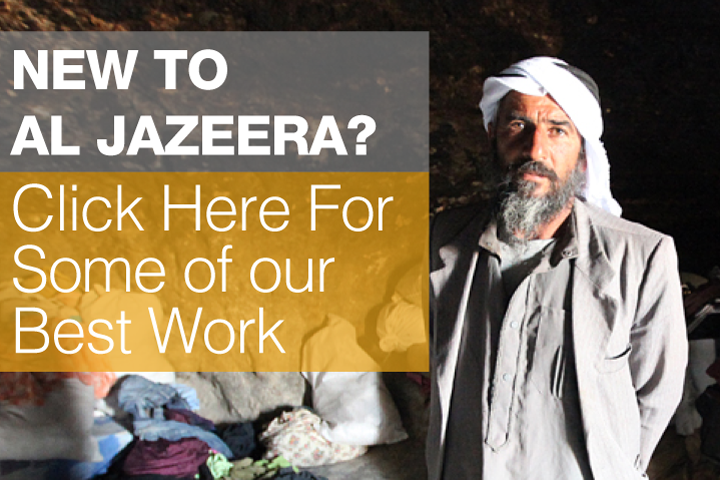Analysis: The Taliban’s resurgence in Afghanistan
The Taliban have been making strategic gains, as Afghan government forces face new threats, writes Dawood Azami.

The Taliban in Afghanistan have expanded their presence and acquired more reach in the country than at any point since the toppling of their regime as a result of the United States-led intervention in 2001.
The resurgence of the Taliban fighters poses a critical challenge for the Afghan government and the remaining US and NATO forces.
Keep reading
list of 4 itemsPhotos: Tourist numbers up in post-war Afghanistan
Taliban ban on girls’ education defies both worldly and religious logic
Afghanistan calls for ‘respect’ after Cricket Australia snub
There is a multi-pronged strategy behind the Taliban’s recent violent campaign and territorial gains.
READ MORE: Afghans fear the rising influence of Taliban
Their objective is to establish “permanent” sanctuaries and strongholds to form functional administrative systems.
They also want to capture big chunks of the country to get the upper hand in the stalled peace process, which is likely to start in 2016.
Security deteriorating
The Afghan security situation has deteriorated significantly since the launch of the Taliban’s 2015 spring offensive.
Afghanistan has never been as insecure in the past 14 years as it is now . More Afghans have been killed in 2015 than any year since 2001.
The Taliban planned their resurgence in 2014 and aimed to expand their territorial control in order to change the momentum in their favour.
|
|
They reportedly moved a large number of their fighters from Pakistan into Afghanistan. In addition, three other major factors contributed to their recent resurgence in Afghanistan.
1. The end of the US and NATO combat mission in Afghanistan, which was completed at the end of 2014, and the withdrawal of most foreign forces from the country emboldened the Taliban.
The threat of the Taliban being bombed or raided reduced significantly after the reduction in the number of foreign forces and the change of the US-NATO mission.
The new NATO-led Resolute Support international coalition, which consists of around 12,500 foreign soldiers (mostly Americans), began on January 1, 2015 and mainly involves training, advice and assistance for the Afghan security forces and institutions.
2. Several thousand mainly Uzbek, Arab and Pakistani fighters based in the North Waziristan Tribal Agency crossed into Afghanistan after the Pakistan military launched its Operation Zarb-e-Azb in June 2014. The contribution of these foreign fighters further intensified the fight against the Afghan government.
3. Since taking full responsibility for security from the US-led international forces, the Afghan security forces have shown resilience and courage, but they are under strain. They are under-resourced and under-equipped.
The Afghan military also lack certain capabilities, especially air power and reconnaissance.
Meanwhile, the Taliban have tried to open multiple fronts to divert the attention of Afghan forces. By increasing the number of attacks throughout the country, the fighters have overwhelmed and overstretched the Afghan forces.
Foreign fighters
The Taliban are the main and dominant group in Afghanistan fighting the Afghan government and its foreign allies. They reportedly have tens of thousands of fighters and have a presence in most of the country’s 34 provinces.
But a substantial number of foreign fighters, mostly from the Middle East, Central Asian countries and Pakistan, are also engaged in fighting in Afghanistan.
According to Afghan officials, the number of foreign fighters in the country exceeds 7,000.
More than 10 local and regional/international armed groups are involved in the conflict in Afghanistan, including the main Afghan Taliban faction, the Taliban splinter group, al-Qaeda, the Islamic State of Iraq and the Levant (ISIL) and the Islamic Movement of Uzbekistan (IMU) which joined ISIL in August 2015 .
![A picture made available in August shows an ISIL leader sitting with colleagues and his family at an undisclosed location in Kunar province, Afghanistan [File: EPA]](/wp-content/uploads/2015/12/8c71558851944efb85c4d55420f360f6_18.jpeg)
Although these foreign fighters are using Afghan soil, they have their own regional and international agendas too.
The Taliban have been fighting the newly emerged ISIL group since January 2015, when it established its Khorasan Province – an old name for Afghanistan and the neighbouring parts of Pakistan, Iran and Central Asia.
READ MORE: Deadly Taliban infighting erupts in Afghanistan
This means that the Taliban are not only confronting the Afghan government and its foreign backers, they are also fighting on two other fronts against ISIL and the Taliban splinter group.
The Taliban splinter group also says it is against ISIL.
Most foreign fighters, including those linked with al-Qaeda and the Islamic Jihad Union – a splinter faction of the IMU – are supporting the Taliban.
Although ISIL and the Taliban splinter group have challenged the supremacy of the Taliban, they are not in a position to pose an existential threat to the group in the near future.
But ISIL and infighting have diverted their attention in some parts of the country.
Taliban expands fight
The Taliban have increased their activities throughout the country.
By carrying out attacks in different parts of Afghanistan, the Taliban want to give the impression that their fight is not limited to certain parts of the country.
The temporary seizure in September of the northern city of Kunduz , one of Afghanistan’s most strategic and richest cities, and the capturing of several districts in other northern provinces, including Takhar and Badakhshan, confirmed this impression.
ANALYSIS: Why Taliban focus is on freeing prisoners
With the announcement of the death of their revered founding leader, Mullah Omar, in July 2015, the Taliban entered uncharted territory and faced their biggest challenge since the launch of the group in 1994.
The Taliban’s new leader, Mullah Akhtar Mansoor, found it difficult to keep the group united.
The Taliban’s recent gains are also linked to their new leader’s efforts to establish his authority and increase his prestige as someone who can deliver impressive victories on the battlefield.

The territorial expansion also reasserts the Taliban’s control amid competition from the ISIL group, which challenged their supremacy in some provinces, especially Nangarhar, Kunar, Zabul, Helmand and Farah.
In recent weeks, the Taliban have intensified their campaign to capture southern Helmand province, which has been a major theatre of war for more than a decade.
The province has a symbolic and strategic significance for the Taliban. By capturing Helmand, the Taliban want to further their gains in neighbouring provinces in the south of the country.
As most of Afghanistan’s opium is produced in Helmand, the intensity of war in the province has a financial aspect too.
READ MORE: Residents stranded as battle for Helmand intensifies
The drug trade has been one of the main sources of income for the Taliban, who reportedly secure tens of millions of dollars annually through an elaborate system of taxing different stages of drug production, including poppy cultivation as well as opium processing and trafficking.
In addition, drug networks, local warlords and corrupt elements inside and outside the government contribute to the deterioration of the security situation in the country.
An ‘imposed war’
Afghan government officials frequently refer to the regional and international dynamics of the ongoing conflict as an “imposed war”.
The violence in the country has increased at a time when the Afghan government, backed by the US, wants to restart the peace process and reach a political settlement with the Taliban.
The past 15 years has shown that the war in Afghanistan is multi-dimensional, involving several actors at local, regional and international levels.
Only a coordinated and multinational approach can resolve one of the world’s most protracted conflicts.
Dawood Azami is an award-winning journalist, writer and academic. He works as a multimedia editor with the BBC World Service in London and has written extensively about the Taliban.